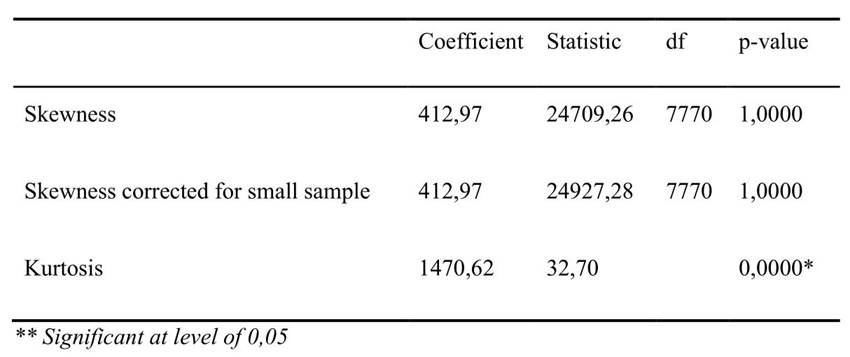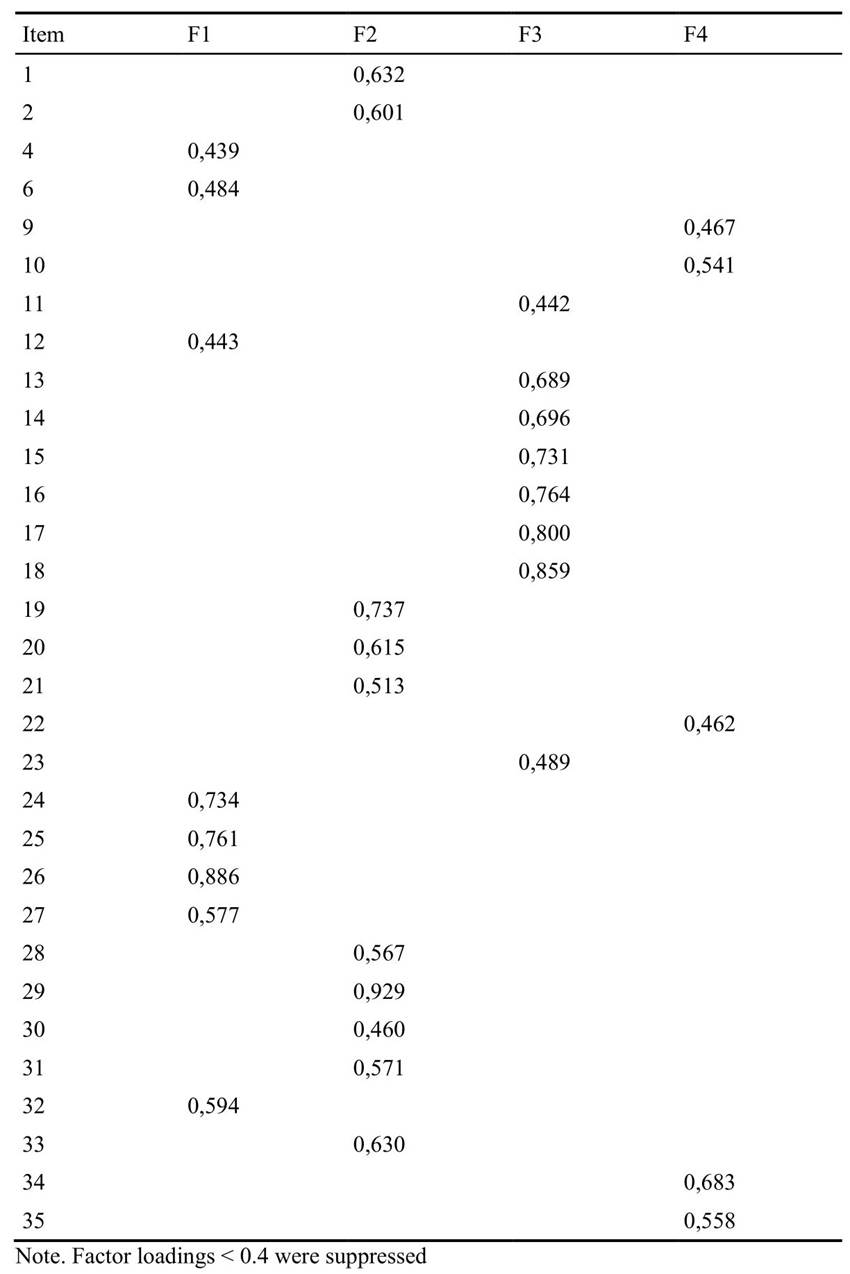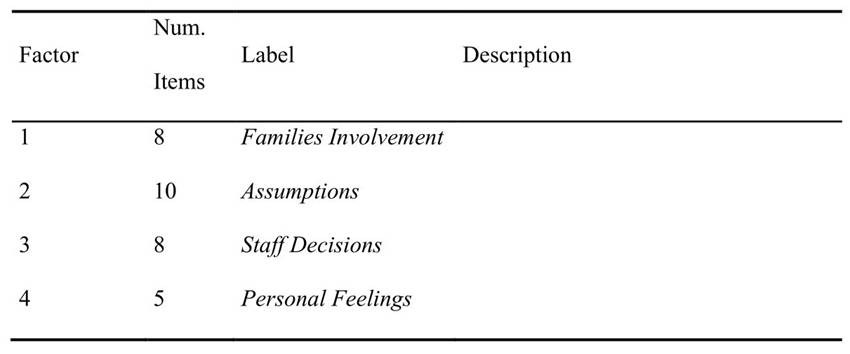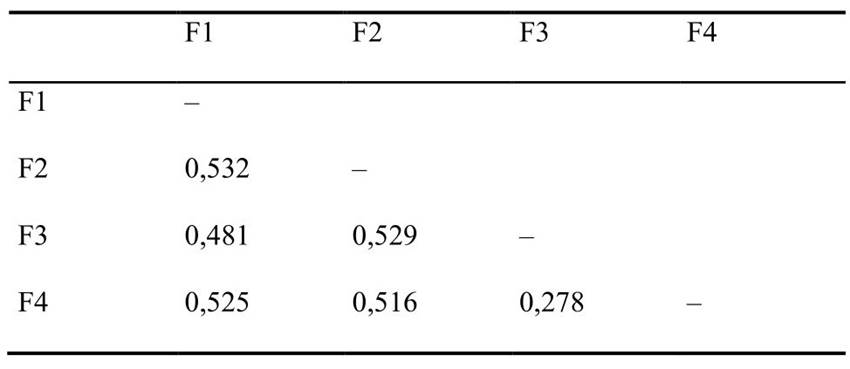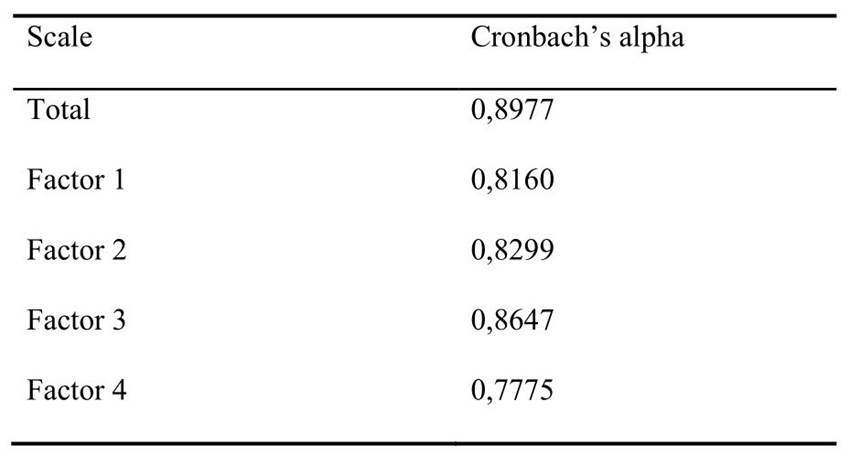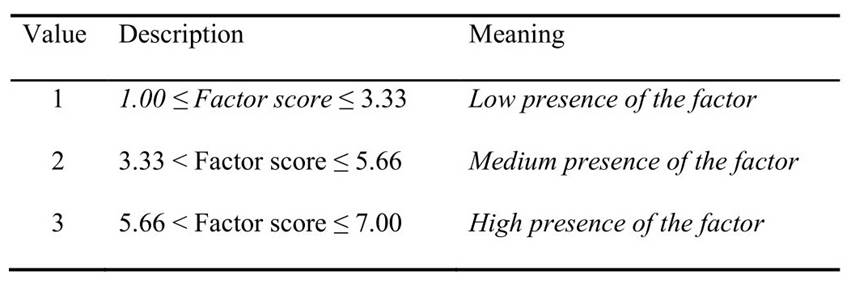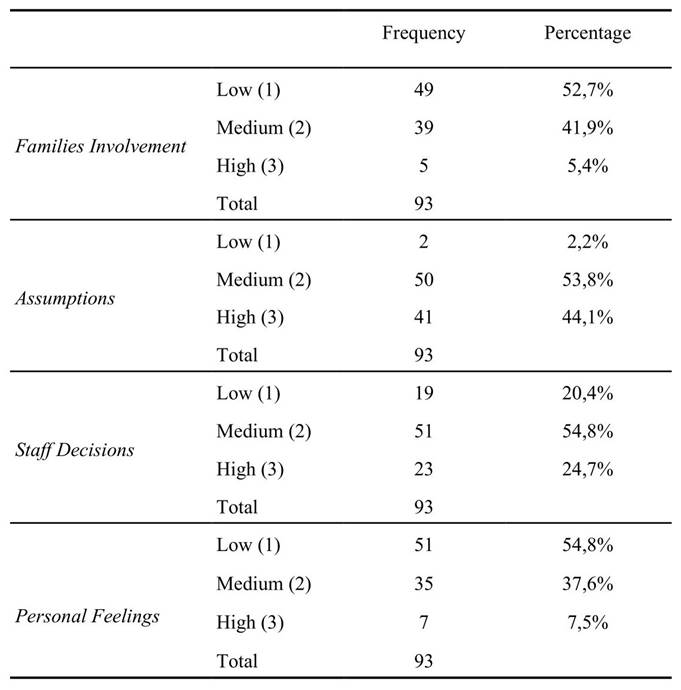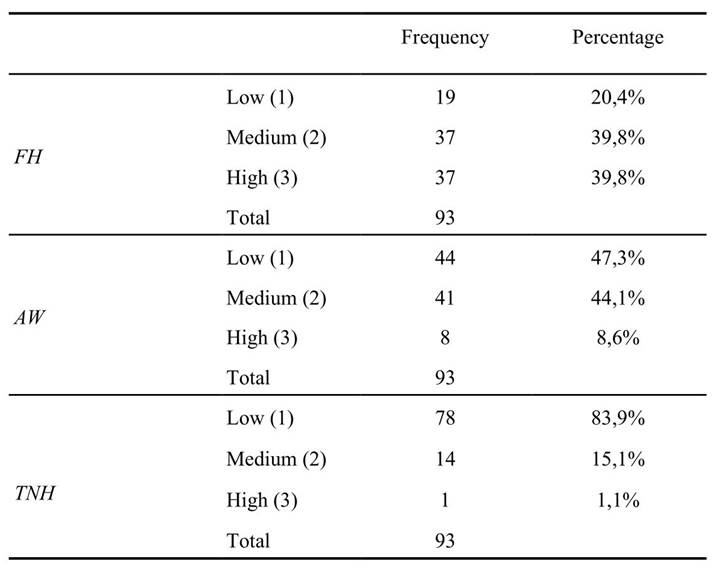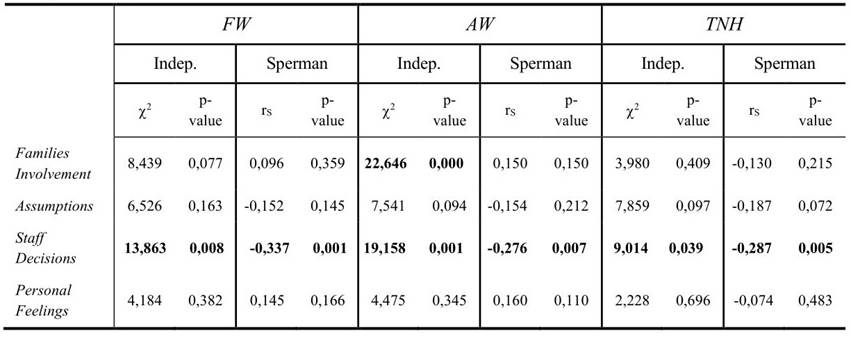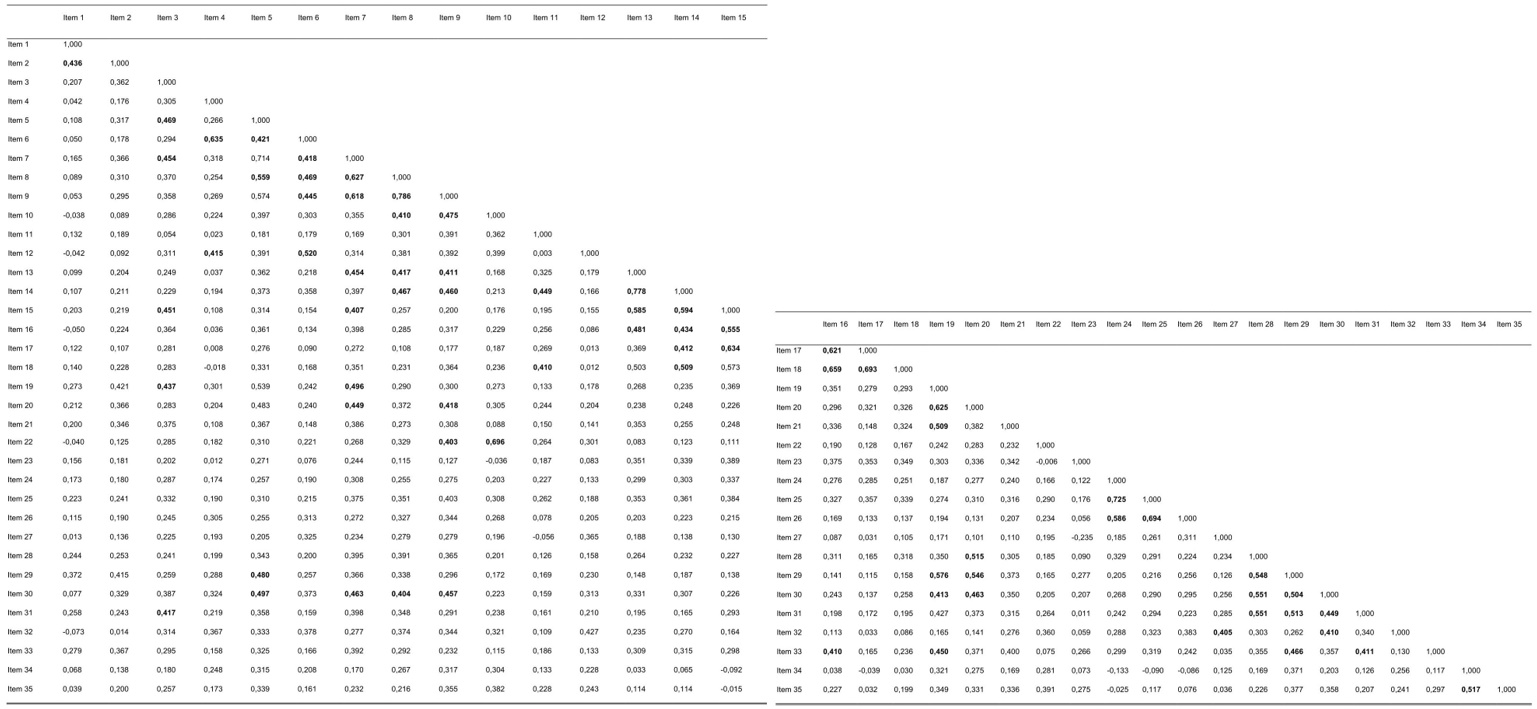Introduction
Does students’ performance improve when homework is a current practice? Are home practical assignments essential to the educational success? Is the amount of time spent working on exercises at home a waste of time? Why should students do tasks at home? Do students from richer families perform better at exercises? Nowadays, these and other questions are involved in the homework debate; questions that teachers, parents, and students ask in order to clarify the real value of homework assignment and its utility.
Different agents have a role in the homework debate, and we can address this issue from the point of view of teachers, students, or parents. Moreover, the type of activities that should be completed, in order to establish a typology and their categorization, could be another key question.
We can find research about this topic in practically every country; namely, studies that try to answer how useful homework is for infants to higher-level students. Although there are many studies available, the debate is still alive, and we can find different sets of conclusions.
Our contribution to this topic is based on the analysis of those factors, factors that could contribute to the students' education in different ways, such as, how the family is involved in order to help their children in completing homework, and the kind of influences that could affect teachers when sending homework. In this case, we study their feelings, and the staff decisions and assumptions in relation to assigning homework, taking into account the variables about the frequency of tasks, the activities that students should do and the necessity to practice at home.
Theoretical framework
This research is focused on four factors concerning homework - Family Involvement, Personal Feelings, Staff Decisions, Assumptions - and the variables that can affect them: frequency, activities per week. Family Involvement is a factor related to the involvement of family members helping the students. The factors Personal Feelings, Staff Decisions, and Assumptions are the ones that concern the teachers' perceptions and pedagogy when proposing homework, and they are determined by the frequency and amount of activities proposed and its necessity. In the following section, we are going to establish a theoretical review related to teachers as homework originators, the time spent doing homework and the kind of activities; and also, we will examine the role of the family as a collaborating agent.
2.1. The teacher as a homework giver on Maths homework
In order to make a review of different studies focused on Maths homework, Fan et al. (2017) have investigated the students’ achievement in Maths (and Science) through a 30-year meta-analysis, from 1986 to 2015, in the USA and in Asia; and they conclude that there was a positive but small correlation between homework and academic achievement in Maths and Science. In addition, the homework-achievement correlation was stronger for elementary school than for middle school students, and stronger for U.S. students than for Asian students.
Another study by Du et al. (2016) about the factors that influence students’ help-seeking in Maths homework reveals that mastery orientation exerts a powerful influence on students' help-seeking in math homework. As we can see in their conclusions, their results further suggest that teachers can play a vital role in promoting help-seeking, by placing greater emphasis on mastery goals, by making homework more interesting, by helping students learn to maintain motivation, and by encouraging families to make themselves available in the homework process.
Xu et al. (2016) examine the mathematics homework of a Chinese group of students and compare the findings with a recent study involving U.S. students. The findings revealed that some predictors for homework interest functioned similarly, that is, affective attitude towards homework, learning-oriented reasons, monitoring motivation, in both samples; while some others did not, such as those related with parent education, family homework help, and teacher feedback, suggesting in such cases that cultural differences influence students' interest in homework. Moreover, according to their data, they conclude that Mathematics homework interest was positively related to mathematics self-concept.
On the time spent doing homework
Alonso et al. (2016) analyze the academic performances of a group of 7725 Spanish adolescents and 2246 teachers from Principado of Asturias (Spain) in relation to Mathematics homework. They conclude that the autonomous work of the students is more important than the time they spend on homework; besides, the relevance that homework has in school grades and its allocation frequency are the most significant variables. Further, family involvement in learning and the importance of homework for the family also appear positively and significantly linked to performance. In relation to the time spent doing homework by the students, Jerrim et al. (2020) present similar results, they conclude that there is little evidence about the relation between the amount of homework time spent by primary school children and their academic achievement. But, on the contrary, Kalenkoski & Pabilonia (2017) conclude that homework time has positive effects on academic achievement for boys; and according to these researchers, gender and the effect of time are data that must be considered in this debate.
On the kind of activities
In relation to the type of activities that students should perform when doing their homework, Zurcher et al. (2016), in their study with students of the North University in Michigan (US) and the e-Homework Platform they use; researchers designed a proposal where students were asked to create their own exam questions as homework, and results show that this educative practice was a success. According to the authors, students generated approximately 1000 largely open-ended organic chemistry questions, some with mechanic and structural drawing capabilities, by modifying old exam questions. In their own words, the students’ questions spanned a variety of cognitive levels that skewed, as intended, toward skill-building. According to their assessment scheme, 75% of the questions were deemed to be of the highest quality. As a consequence of the results obtained in the investigation, they advocate collaborating with undergraduate students in a “teaching team” in order to generate high-quality instructional materials aligned with their course content. Therefore, this data focus our attention on the type of homework activities and their effectiveness.
Rawson et al. (2017) investigate the relationship between homework activity and academic achievement; they use a novel method for accurately measuring students’ homework activity using smartpen technology. In this investigation three groups of engineering students in an undergraduate statistics course used smartpens to complete their homework problems, thus producing records of their work in the form of timestamped digitized pen strokes. When the data was analyzed consistent with the time-on-task hypothesis, there was a strong and consistent positive correlation between course grade and time doing homework as measured by smartpen technology (r=.44), but not between course grade and self-reported time doing homework (r=−.16). Consistent with an updated version of the time-on-task hypothesis, there was a strong correlation between measures of the quality of time spent on homework problems (such as the proportion of ink produced for homework within 24 hour of the deadline) and course grade (r=−.32), and between writing activity (such as the total number of pen strokes on homework) and course grade (r=.49). Overall, smartpen technology allowed a fine-grained test of the idea that productive use of homework time is related to the course grade.
In the case of the teachers’ perceptions that define the factors related to why teachers give homework to students, Snead & Burris (2016), in their qualitative analysis, explain that teachers identified several instructional and non-instructional reasons including: practice, reinforcement, review, responsibility and multiple of the aforementioned categories. In this line, Gu & Kristoffersson (2015) investigated homework in Swedish lower secondary schools, that is, teachers’ perceptions and experiences about it and their understanding of its potentials and challenges for students’ learning and development, and they show, as the main result, that most teachers assign homework because they believe that it will benefit the students’ learning, meanly when it is focus on consolidating and reinforcing knowledge already taught.
According to Noyes (2012), teacher pedagogy and classroom culture have a very real impact on the attitudes of students, both positively and negatively. The author concludes that there is a necessity of an increase in the quantity and quality of student-centered learning in mathematics classrooms. On this issue, Bednarz & Proulx (2017) conclude, in their investigation, that it opens new ways of conceiving the mathematical preparation of teachers, because they assume that it is important to define the “professional” field in relation to Mathematics, which can, in turn, help them to think of mathematics teacher education. In this line, in our essay we want to highlight some aspects related to the perceptions about the professional activity of teachers when they give homework to their students, with the general objective of clarifying and enlarging the issues that an educator has to take into account during the process of teaching and learning.
Some authors, such as Lorenzo Torrecillas et al. (2016) and Del Valle (2015), review the available bibliography about homework, in order to define the advantages and disadvantages of homework, and summarize that it is very important to establish how many tasks should students complete, the timing of homework completion, and how homework is going to be done; and they conclude that there is not a general agreement. They explain how some authors see homework as a very positive practice because it is understood as a reinforcement in relation to the contents students should learn, and as a tool to improve schools’ relationship with families; but on the contrary, other authors explain that it is a wrong practice against the social justice concept and it is considered a punishment, mainly with those students whose families are unable to help them.
2.2. The family as a collaborating agent on family involvement
Mora & Escardíbul (2018) study the effect of home environment from a unique sample of more than 2300 students in the last 2 years of compulsory education in 70 schools in Catalonia (Spain); and in relation with parental assistance in homework during adolescence, defined from the children’s perspective, results show that a positive home environment increases the relative probability that parents get involved in their children’s homework, an effect slightly higher for girls than for boys.
In this line, Valle et al. (2015) explain that students do a quality job when doing homework if their parents support them with the tasks and when the teacher gives them proper feedback. Furthermore, Doctoroff & Arnold (2017), in their study of 61 elementary school children, examined how maternal behavior and child engagement in a homework-like task relate to reading achievement, and whether task engagement mediates the relation between parenting and reading achievement. Maternal behaviour and task engagement were examined using videotaped observations of mother-child interaction during a homework-like task. This research conclusions point to the importance of child engagement as a potential mechanism for academic success, and to the ability of parents to foster engagement and achievement.
Xu et al. (2017) studied the validity and reliability of the parental homework support scale, and for this study, they conducted a psychometric evaluation of the Parental Homework Support Scale (PHSS) involving 796 eighth-grade students, and findings revealed that the PHSS consisted of two distinct yet related subscales: Content-oriented Support and Autonomy-oriented Support. In addition, the investigation found a satisfactory level of factor loading invariance across gender. Results, further, revealed that consistent with theoretical expectations, so that, the PHSS was positively correlated with value belief, expectancy belief, help-seeking, homework management, homework completion, and Mathematics homework grade.
On the contrary, and in relation to families support, Polo Martínez & Bailén (2016) explain that students with poorer families obtain the worst results in relation to the performance of homework, so, in such cases belonging to a disadvantaged family increase the possibilities of being an unsuccessful student, and we may say that we consider it a case of a non-social justice in an educational environment. And these results do not change all around the world; as we may read in PISA (OECD, 2016) about the education findings obtained in different countries, poorer students are three times more likely to low perform than wealthier students, and immigrant students are more than twice as likely as non-immigrants to be low achievers. The review of homework by Polo Martínez & Bailén (2016), based on the OECD (2013) assessments, explain that the Spanish Education System has one of the worst results; authors review some studies (for example, Kohn, 2013) about the improvement of students' marks in relation with their homework and explain, on the one hand, that homework in primary school students is useless (a data that is in contradiction with the study by Fan et al. (2017), because they conclude that homework achievement is successful for elementary schools); and, on the other, that it is worst with poorer families, because they cannot help students when completing it, and this situation can affect their grades.
Related to this, the economic situation of immigrant families can be a decisive factor for students success; Suárez et al. (2016) analyze the homework involvement and academic achievement of native and immigrant students, based on a sample of 1328 students of 10-16 years old in Spain, where the 85.6% of students were from Spanish families and the 14.4% of students were from immigrant families of South America, Europe, Africa, and Asia. Results showed higher involvement in homework in native students than in immigrants. Among immigrant students, those who were more involved in homework have better academic achievement in Maths at secondary grades. There weren’t found gender differences in homework involvement, but age differences were reported. Immigrant students are less involved in homework in secondary grades than students in elementary grades. The study highlights the relevance of homework involvement in academic achievement in immigrant students.
Silinskas & Kikas (2019) present a study that examines the longitudinal associations between children’s perceptions of parental involvement in Mathematics homework (control and support) and their performance and motivation (task-persistent homework behavior and self-concept). A number of 512 students reported their perceptions concerning parental involvement in sixth-grade Mathematics homework. In grades 3 and 6, children completed Math tests, evaluated their own Maths self-concept, and their mothers (420 mothers) evaluated task persistence during homework. Firstly, the results showed that low self-concept in Maths predicted the increased parental control, which in turn related to low Maths performance, task persistence, and Maths self-concept. Secondly, the perceived parental support was related to the increased task persistence during homework. However, parental control was especially detrimental to boys’ task persistence and math self-concept. As we can see, this study can be compared with the investigation by Weerasinghe (2020), where he has demonstrated that parental involvement in children's achievement is associated with a variety of positive and negative academic and motivational outcomes.
So, from our bibliography review we may say that, in order to design a homework system in our schools, we have to define: how many, when, and how. These three premises imply a good coordination job between teachers and a good relationship between teachers and parents. Besides, if we want to work encouraging an inclusive school in relation with an effective homework program, on the one hand, we should give adequate educational and individualized support to our students, and on the other hand, we should provide social aids to poorer and immigrant families, helping their sons and daughters in order to complete homework, since they are not able to do this either because of their educational background or their socioeconomic status.
3. Method
In our investigation, we are going to analyze data in other to obtain some conclusions related to the factors defined in the theoretical framework, such as Family Involvement, Personal Feelings, Staff Decisions and Assumptions; and the variables defined as the frequency of homework, activities per week and needed to do homework. With a sample of 93 in-service teachers of primary education of Región of Murcia (Spain) that answered a validated questionnaire during the academic year 2016-2017, with 35 questions focused on the family support, the feelings of the teachers towards homework, the staff decisions about homework in the schools where they are working and the teacher assumptions about homework; making, moreover, a correlation between them and the frequency of homework, the activities per week and the time that students need in order to perform homework.
The 93 school teachers work in public schools and schools subsidized with Spanish public funds; these schools are situated in different towns and cities of the Región of Murcia, this region is located in the southeast of Spain, bordering with three other Spanish regions: Comunidad Valenciana, Castilla la Mancha, and Comunidad Andaluza; and with the Mediterranean Sea. These schools provide education to infant and primary students; Primary Education is organized in six levels and, depending on the number of students, each level can have from one to four lines per school, that is, we can find schools with one class of the first course and schools with two, three of four, for example. The teachers that work in these schools are two kinds, mainly: primary teachers that teach a group of subjects: Maths, Language and Literature, Social Science and Nature Science; and teachers who specialized in other subjects that teach English, French, Physical Education, and Music. Teachers work in a group, in coordination with their colleagues of the same level, and these groups have got a coordinator that works in a group, too, with the rest of the coordinators of the school as a whole, in order to teach the different contents of their subjects in a coordinated way, so the decisions of the group of teachers that work in the same school define the homework planning. This model of coordination is established by the Spanish educational laws and governments.
The questionnaire validation
In order to validate the content of the questionnaire, a group of 15 experts was established. The group was formed by in-service teachers (7), school headmasters (2), headteachers (2), coordinators (2), and training advisors (2) which presented an average time of experience above nine years.
The experts were asked to complete a brief survey with the purpose of evaluating the understanding and adequacy of each item in the initial questionnaire. The ratings provided by the experts were analyzed to determine the degree of importance and understanding of items using the average of scores. Kendall’s W concordance test, using an estimation of the p-value based on a permutation method (Marozzi, 2014), allowed us to study the degree of agreement between experts’ ratings.
Using scores given by experts, we established an average of answers for each item. Table 1 shows the understanding and importance of indices for the items. The basic statistics establish the average score (1 to 5) obtained for each item and the percentage of agreement of answers among experts. The percentages were calculated for two sets of scores: the percentage of experts who had given a 4 or more and the percentage of experts who had given a 5.
According to the results, it can be observed that, in both cases, understanding and importance, all items are judged as good or important (4 or more) by 80% or more of the experts.
A concordance analysis was carried out to test the agreement among the experts for both cases (understanding and importance). Table 2 shows the results of the overall permutational test of Kendall’s W statistic.
Table 2 Results of the overall tests of concordance among the experts’ score. (a) Understanding scores and (b) Importance scores
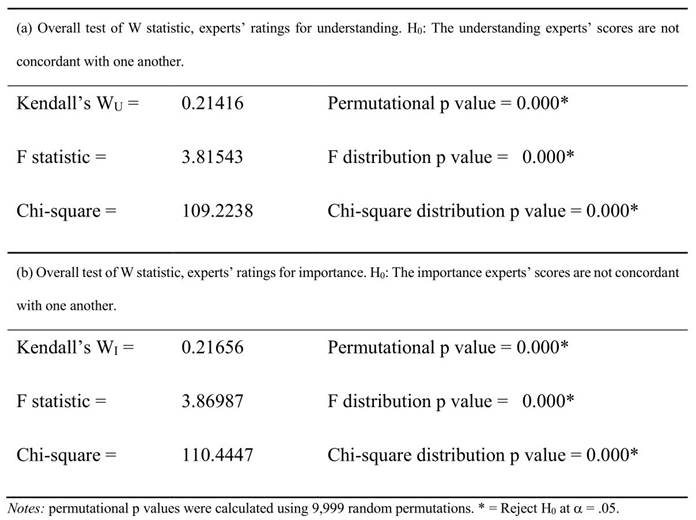
The results of the test of concordance allowed us to observe a good overall concordance between ratings placed by the 15 experts, WU= 0.21416 and WI = 0.21656 with p<0.000 in both cases.
Finally, the experts were asked to assess the adequacy of the items to conduct a factorial analysis. All of the items were deemed adequate by the overall experts.
Procedure
Evidence of construct validity was sought through factor analysis using a matrix of polychoric correlations (Muthen & Kaplan, 1992) where the items of the questionnaire were considered as categorized continuous variables from a normal multivariate distribution.
Once the matrix of polychoric correlations had been estimated, the assumption of bivariate normality and the adequacy of its use were tested. The former test was done by calculating the percentage of test that rejected the hypothesis of bivariate normality for each pair of correlations, assuming a nominal level of 5%, and the latter using the results of the analysis of the Mardia’s multivariate asymmetry skewness and kurtosis (Mardia, 1970).
An exploratory factor analysis (EFA) was then carried out using parallel analysis, and (PA) based on minimum rank factor analysis (MRFA) as the procedure for determining the number of dimensions (Timmerman & Lorenzo-Seva, 2011). Unweighted least squares (ULS) were used as an estimation method for factor extraction, along with a Promin rotation to achieve factor simplicity (Lorenzo-Seva, 1999).
The theoretical model was tested by means of confirmatory factor analysis (CFA) using ULS. We also examined, for the whole questionnaire and for the items associated with each factor, the internal consistency using Cronbach’s alpha.
Finally, using a sample of 93 math teachers, the relation between the factors obtained in previous steps and a set of three outcomes variables (frequency of homework, activities per week, and time needed to do homework) were studied by means of a chi-square independence test and the Sperman’s correlation coefficient.
Data screening
The data were screened for univariate outliers. Two out-of-range values, due to administrative errors, were identified and corrected revising the questionnaires. The minimum amount of data for factor analysis was satisfied, with a final sample size of 359, providing a ratio of over 10 cases per variable.
Results
In none of the 595 correlations, the assumption of bivariate normality was rejected at the significance level of α = 0.05/595 = 0.000084, which showed that the assumption of bivariate normality was fulfilled. On the other hand, the analysis of the Mardia's multivariate asymmetry skewness and kurtosis (see Table 3), which showed a significant excess (at level 0,05) of the measure of multivariate kurtosis with respect to the multivariate normal case, along with the fact that in 22 of the 35 univariate distributions of ordinal items presented a zero centered indices of kurtosis greater, in absolute value, than 1, justified the use of the polychoric correlation matrix in the factorial analysis procedure.
Factor analysis
Initially, the factorability of the 35 items was examined. Firstly, the correlation matrix shows that 30 of the 35 items in the questionnaire correlated at least 0.4 with at least one other item, suggesting reasonable factorability (see Appendix A). Secondly, the Kaiser-Meyer-Olkin measure of sampling adequacy was 0.831, which is above the commonly recommended value of 0.6, and Bartlett’s test of sphericity was significant (χ2 (595)=8032.3, p<0.05). Finally, the commonalities were all above 0.2, confirming that each item shared some common variance with other items. Given these overall indicators, factor analysis was deemed to be suitable for all 35 items.
Exploratory factor analysis
A four-factor structure was obtained, in accordance with the procedure proposed in Timmerman & Lorenzo-Seva (2011) and references therein. The factors were retained as the real-data percentage of common variance is higher than the 95th percentile of the PA-MRFA’s random datasets (see Table 4). Of these, the first factor explained 29,81% of the variance, the second 9,26%, the third 7,09%, and the fourth 5,93%.
The matrix structure with the factor loadings of the rotated Promin solution is shown in Table 5.
Items 3, 5, 7, and 8 were eliminated because they did not load above 0,4. The remaining items were grouped in a four-factor structure and the factors were labeled according to the loadings of the items that took part in each construct (see Table 6).
In terms of the content of the items, the common feature of the high loaded items in the first factor, F1, refers to the effect of the pupils’ parent pressure on the teacher about the homework.
Since the aim of EFA is to reduce groups of item responses to conceptually important latent variables that make sense of data, an oblique rotation method (Promin) was chosen to expect to obtain a clear and easy interpreted structure of factors. The use of an oblique rotation method in order to align clusters of variables allows the factor to correlate. The correlations between the resulting factors are shown in Table 7.
Confirmatory factor analysis
In order to study the fit indices of our four-factor model, the ULS method was performed a CFA based on a matrix of polychromic correlations. The indicators used in the study were the goodness-of-fit index (GFI) and root mean square error of approximation (RMSEA).
Our model presented a value of 0,97 for the GFI, which is above the commonly recommended value of 0,95. On the other hand, the root means square of residuals was 0,0593, which can be considered as moderate because was above the threshold of 0,05, which is commonly established as a limit for a good fit. Although the RMSR value was above the threshold of 0,05, it was around Kelleys’s criterion (Kelley, 1935) for the expected mean value of RMSR for an acceptable model (0,0529). Thus, we can consider that the factor structure obtained is adequate for interpreting the results of the questionnaire.
Internal consistency
For testing the internal consistency of the questionnaire we used Cronbach’s alpha as a method to calculate a questionnaire’s reliability. The values of the Cronbach’s alpha calculated for both the whole questionnaire and each factor’s items are shown in Table 8.
According to the commonly used rule of thumb that qualifies the internal consistency of a scale as “good” if its Cronbach’s alpha is above 0,8 and “acceptable” if it is above 0,7, we noted that Factor 4 was the only case that shows a Cronbach’s alpha value less than 0,8. This lower value can be explained by the fact that in this scale the lowest number of items (5) was presented.
Association of factors and Maths homework-related variables
To provide some findings of the correlates of factors and measures of math homework load, factorial scores and three variables (frequency of homework, activities per week, and time needed to do homework) were measured using a sample of 93 in-service math teachers.
The factors score was calculated using the mean of the values obtained in each of their items and recoded, as ordinals variables, using the criteria shown in Table 9.
Analyzing the sample data for the categorized factor scores (Table 10) and using the modal category as an indicator of the presence of each factor in the sample, we associated a low presence to the factors Families Involvement and Personal Feelings and a medium presence to the Staff Decisions and Assumptions.
The outcome variables examined in this study were frequency of homework (FH), which represented the number of days per week that teachers assign homework to their pupils; activities per week (AW), representing the estimated number of activities per week assigned to pupils; and time needed to do homework (TNH), where teachers estimated the total time (in hours) per week needed by pupils to do the homework assigned. The variables were recoded as ordinal variables using the code values listed in Table 11.
Table 12 shows the distributional values associated with each outcome variable gathered in the study. Using, as we made before, the modal value as an indicator of the tendency of the variables, we observe a Medium-High for the variable FH and a low tendency for the variables AW and TNH.
To study the association of each factor with each of the outcome variables, taking into account the categorical/ordinal nature of variables that are being studied, the chi-square test of independence was used and the Sperman’s correlation coefficients were calculated and tested.
Table 13 shows the results of running the chi-square test of independence, using the Yates’ correction, and the correlation test based on the Sperman’s correlation coefficient for ordinal variables. Observing the results, we can conclude that there is a statistically significant dependency, at the 0,05 level, between all outcome variables and the Staff Decisions factor. Furthermore, at a level of 0,05, we have statistical evidence to affirm that the relations between Staff Decisions and FW, AW, and TNH were monotonically correlated. Since the Sperman’s correlation coefficients were all negative, we can say that the monotonic dependency is inverse (Staff Decisions-FW: r=-0,337; Staff Decisions-AW: r=-0,276; Staff Decisions-TNH: r=-0,287). Thus, a high value of the outcomes variables is observed for low values of the Staff Decisions.
On the other hand, we observed that there exists a statistically significant (alpha=0,05) dependency between the variables Families Involvement and AW (activities per week). In this case, we cannot conclude that the values of these variables were monotonically correlated in the population. Although, for our sample values a positive Sperman’s correlation coefficient (r=0,15) was observed, which can be interpreted as direct monotonic correlation.
4. Discussion and conclusion
The objective of our work is to explore and define the influencing factors in primary school teachers when proposing school homework to students. For this, we designed an instrument, and after the relevant analysis, we can indicate that this instrument has a very acceptable psychometric characteristics, good internal consistency, and reliability. The measures of factorial adjustment of the sample obtained by means of the Kaiser-Meyer-Olkin test confirm that it makes sense to carry out the factorial analysis.
The analysis carried out has shown the existence of four factors: Family Involvement, Assumptions, Staff Decisions, and Personal Feelings. The descriptive values associated with the factorial scores of the sample indicate a low incidence of the factors Family Involvement and Personal Feelings, while for the factors Staff Decisions and Teacher Assumptions their incidence is medium.
Throughout the bibliographic review we could see different studies developed in order to answer several questions related to the relationship between homework and academic achievement (Fan et al., 2017; Jerrim et al., 2020; Kalenkoski & Pabilonia, 2017); the importance of the cultural and economic differences between the students' families and their influence in completing homework (Alonso et al., 2016; Doctoroff & Arnold, 2017; Mora & Escardíbul, 2018;Polo & Bailén, 2016; Suárez et al., 2016; Valle et al., 2015; Weerasinghe, 2020; Xu et al., 2016, 2017); the type of activities developed through homework (Rawson et al., 2017; Zurcher et al., 2016); the teachers’ perceptions about the effectiveness of homework (Snead & Burris, 2016); the importance of the teaching pedagogy and preparation about it (Bednarz & Proulx, 2017; Noyes, 2012); and studies where authors investigate the importance of mastery orientation (Du et al., 2016).
This investigation highlights the importance of staff decisions in schools and the assumptions of teachers when they decide to give homework. Teachers work in a group, in coordination with their colleagues in order to teach different contents of their subjects, so the decisions of the group of teachers that work in the same school define homework planning. Moreover, we can conclude from the analysis that staff decisions determine the frequency of giving homework. The number of activities that students should make. This conclusion relates to those investigations byBednarz & Proulx (2017), Noyes (2012), andSnead & Burris (2016) that study those aspects about teacher’ pedagogy when giving homework.
Another aspect this research highlights is the family involvement when students are completing their homework, and we could see that this data determine the number of activities that students make per week, which determine, too, the time dedicated to performing the homework activities. And although other investigations (Rawson et al., 2017; Zurcher et al., 2016) show us conclusions about the type of activities developed in homework, in our case, we focus on the number of activities, which can be considered another point about the teacher decisions, and the planning and the coordination between the group of teachers.
For the area of Mathematics, the study of the association between the factorial scores and the output variables allowed us to observe a dependence between the weekly workload (activities per week) and the factor "Family Involvement". On the other hand, a negative association has been observed between the factorial scores of the factor "Staff Decisions" and all the output variables. This negative dependence indicates that the greater the presence of the factor, the more the decisions in terms of frequency, load, and time of completion of tasks tend to be reduced. Thus, we can conclude that the decisions of the teachers regarding the tasks that are assigned in the area of Mathematics tend to moderate the workload of the child at home. Finally, the results show dependence between the faculty decision factor and the variables, such as the number of days per week that teachers assign homework to their students, the estimated number of activities per week assigned to the students, and the time needed to do the homework.
This study contributes to the theoretical framework developed in the literature about tasks, with the contribution of an initial theoretical model of the factorial structure that underlies the decision making regarding the use of homework. The proposed model is formed by a set of four factors (Family Involvement, Assumptions, Staff Decisions, and Personal Feelings), strongly correlated. These correlations could be caused either by latent variables that mediate between each pair of factors or by the presence of cause-effect relationships between the factors. Thus, from a theoretical point of view, our work contributes to offer new lines of research that, in a cyclical way, develop our theoretical model in order to improve knowledge about the issues raised.
In order to make a synthesis of the results observed in this research, it is possible to state that there are decisive factors for teachers when proposing homework to their students; these factors are conditioned by the number of days per week that teachers assign homework to their students, the estimated number of activities per week assigned to students, and the time needed to complete the task. In the specific case of the area of Mathematics, it is observed that when the teaching teams make a greater effort to make joint decisions regarding homework, the weekly workload and the time of completion are reduced. Thus, we could propose interventions in the field of coordination of the teaching teams of Mathematics, in order to adjust the parameters associated with the tasks, in a way that does not diminish the academic results.
Finally, we would like to point out some limitations of our work and suggest some future lines of research, for we have measured the factors that influence teachers when proposing activities to their students and especially in the area of Mathematics, through the perceptions of teachers, that is, we have searched about the teacher as homework giver related with that factors; but, in future studies, it could be completed with the families’ perceptions, as they are collaborating agents, and with the students’ perceptions, as they are performing agents, and as well as a study about homework in other curricular areas of primary education.















